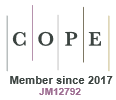Nitrogen metabolism by ruminal microorganisms: current understanding and future perspectives
M Morrison and RI Mackie
Australian Journal of Agricultural Research
47(2) 227 - 246
Published: 1996
Abstract
This review presents an outline of our current understanding of ruminal nitrogen metabolism from three perspectives: proteolytic microorganisms and their enzymes, intraruminal recycling of microbial protein, and enzymes of ammonia assimilation. Some of the pending advances and future research opportunities in these areas are also discussed. The 'smugglin' concept appears to offer the potential to inhibit peptide-utilizing bacteria selectively in the rumen, as demonstrated by initial studies with Prevotella ruminicola. The relative contributions of protozoa-, bacteriophage-, and self-mediated lysis of bacteria to intraruminal recycling of microbial protein are not yet quantified, and further efforts to understand the biology and dynamics of ruminal bacteriophage and protozoa populations are warranted. In Ruminococcus flavefaciens and Prevotella ruminicola, glutamate dehydrogenase (GDH) appears to be the predominant route of ammonia assimilation irrespective of ammonia concentration, and peptides modulate GDH activity in P. ruminicola. The physiological basis behind the difference between optimal ammonia concentrations for ruminal fibre digestion and microbial protein synthesis remains unclear. Molecular biology techniques extend beyond their application in pursuit of the 'superbug' concept, by offering new and exciting opportunities to understand better microbial physiology, diversity, and ecology. Fundamental research in these areas must be continued if further advances in feed utilization and nutrient retention are to be realized.https://doi.org/10.1071/AR9960227
© CSIRO 1996


